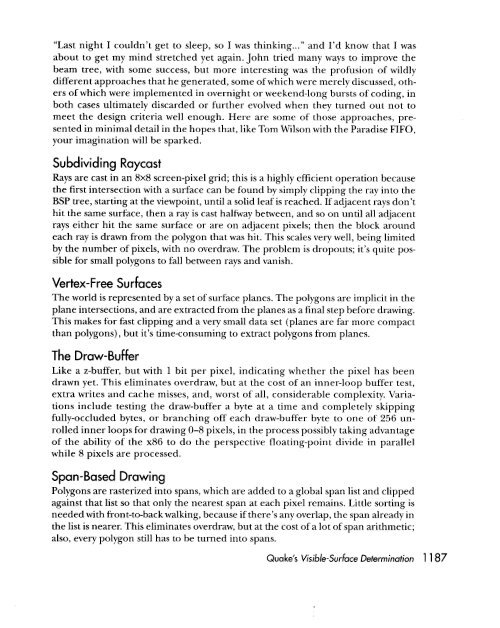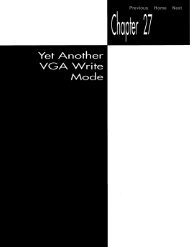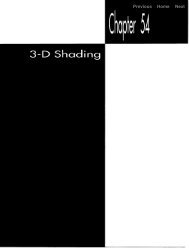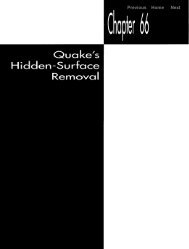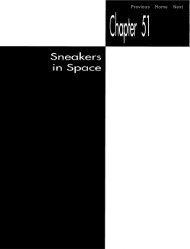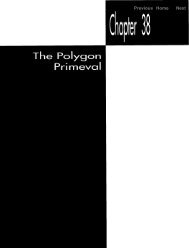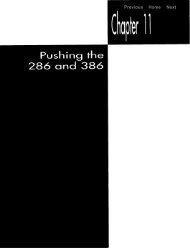quake's visible-surface determination - GameDev.net
quake's visible-surface determination - GameDev.net
quake's visible-surface determination - GameDev.net
Create successful ePaper yourself
Turn your PDF publications into a flip-book with our unique Google optimized e-Paper software.
“Last night I couldn’t get to sleep, so I was thinking ...” and I’d know that I wasabout to get my mind stretched yet again. John tried many ways to improve thebeam tree, with some success, but more interesting was the profusion of wildlydifferent approaches that he generated, some of which were merely discussed, othersof which were implemented in overnight or weekend-long bursts of coding, inboth cases ultimately discarded or further evolved when they turned out not tomeet the design criteria well enough. Here are some of those approaches, presentedin minimal detail in the hopes that, like Tom Wilson with the Paradise FIFO,your imagination will be sparked.Subdividing RaycastRays are cast in an 8x8 screen-pixel grid; this is a highly efficient operation becausethe first intersection with a <strong>surface</strong> can be found by simply clipping the ray into theBSP tree, starting at the viewpoint, until a solid leaf is reached. If adjacent rays don’thit the same <strong>surface</strong>, then ray a is cast halfway between, and so on until all adjacentrays either hit the same <strong>surface</strong> or are on adjacent pixels; then the block aroundeach ray is drawn from the polygon that was hit. This scales very well, being limitedby the number of pixels, with no overdraw. The problem is dropouts; it’s quite possiblefor small polygons to fall between rays and vanish.Vertex-Free SurfacesThe world is represented by a set of <strong>surface</strong> planes. The polygons are implicit in theplane intersections, and are extracted from planes the as a final step before drawing.This makes for fast clipping and a very small data set (planes are far more compactthan polygons), but it’s time-consuming to extract polygons from planes.The Draw-BufferLike a z-buffer, but with 1 bit per pixel, indicating whether the pixel has beendrawn yet. This eliminates overdraw, but at the cost of an inner-loop buffer test,extra writes and cache misses, and, worst of all, considerable complexity. Variationsinclude testing the draw-buffer a byte at a time and completely skippingfully-occluded bytes, or branching off each draw-buffer byte to one of 256 unrolledinner loops for drawing 0-8 pixels, in the process possibly taking advantageof the ability of the x86 to do the perspective floating-point divide in parallelwhile 8 pixels are processed.Span-Based DrawingPolygons are rasterized into spans, which are added to a global span list and clippedagainst that list so that only the nearest span at each pixel remains. Little sorting isneeded with front-to-back walking, because if there’s any overlap, the span already inthe list is nearer. This eliminates overdraw, but at the cost of a lot of span arithmetic;also, every polygon still has to be turned into spans.Quake’s Visible-Surface Determination 1 1 87


